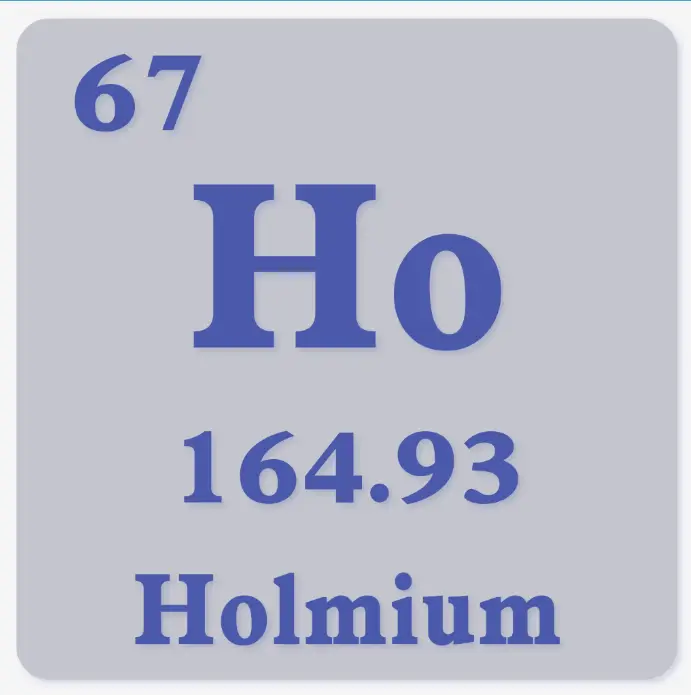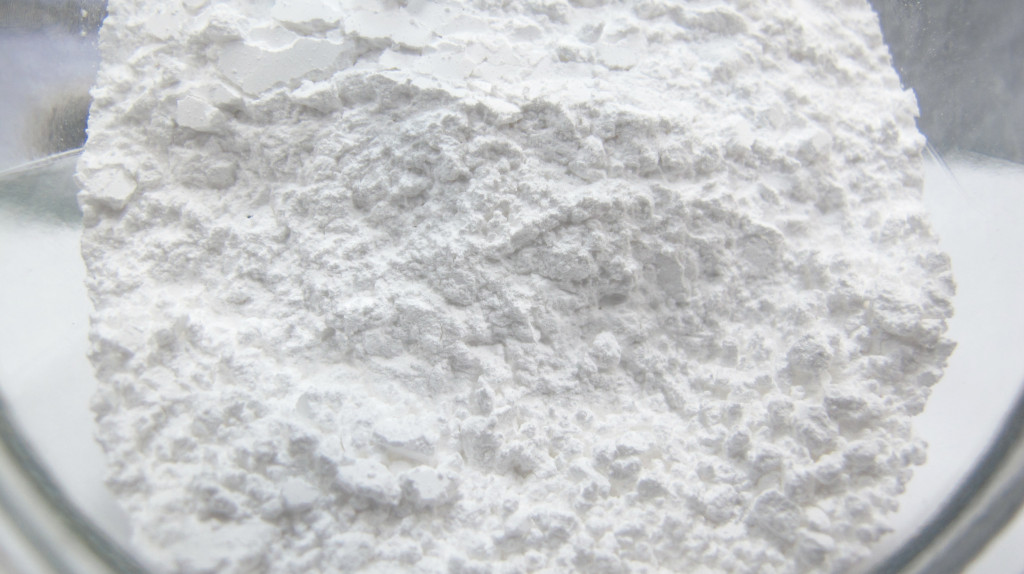Previous articles mentioned the discovery of erbium oxide by scientist Mosander, leading not only to the separation of ytterbium (Yb) but also holmium (Ho) and thulium (Tm). Now, let’s dive into the rare earth element “holmium”!
Introduction
Holmium (Ho) has 35 isotopes, with naturally occurring 165Ho being the most stable. The remaining isotopes are artificially synthesized and radioactive, with the most stable being 163Ho. Holmium is generally found in gadolinite but mainly sourced from monazite ore, where it constitutes just 0.05%, making its production yield quite low.
Initially, in 1878, Swiss scientists J. L. Soret and M. Delafontaine observed holmium’s spectral characteristics, though they couldn’t confirm it at the time. The following year, Swiss chemist P. T. Cleve isolated holmium from erbium oxide and named the rare earth oxide after Stockholm, his hometown, using the Latin name “Holmia.”
Holmium can be extracted from monazite using ion exchange technology, though separating it from other rare earths remains challenging. To obtain pure holmium metal, its anhydrous chloride or fluoride must be reduced with metallic calcium.
Holmium (Ho)
Atomic number:67
Atomic weight: 164.930 u
Atomic structure: Its outermost electron structure is 4f11 6s2.
Physical/chemical properties: It is a bright silver-white metallic luster, soft and ductile metal, and is in a solid state under normal temperature and pressure. It reacts slowly with water and is soluble in dilute acid.
Holmium is relatively stable and corrosion-resistant in dry air. However, it forms a light-yellow oxide in humid, high-temperature conditions, which easily fades.
The oxide color changes under different lighting: it appears yellow-brown under natural light and red under tricolor lighting.
Main Application Areas of Holmium
- Due to having the highest magnetic moment, holmium is used to produce the strongest artificial magnetic fields, in manufacturing high-intensity rare-earth magnets, and as an additive in new magnetic alloys. Small amounts of holmium can be added to magnetostrictive alloys, like Terfenol-D, to reduce the external field required to reach magnetic saturation.
- Holmium has no significant role in the human body, but holmium salts can aid metabolism. While humans typically use about 1 mg of holmium per year, ingestion, inhalation, or injection of large amounts of holmium salts can cause severe health issues.
- Holmium can regulate nuclear reactors, as it serves as a control rod material that absorbs neutrons produced by nuclear fission.
- Due to the long half-life of its radioactive isomer 166m1Ho, holmium can be used for calibrating gamma-ray spectrometers.
- Optical Fiber Applications: Holmium is used in the optical fiber field to produce fiber lasers, fiber amplifiers, fiber sensors, and other optical communication devices.
- Colorant for Zirconia and Glass: Holmium serves as a yellow or red colorant for cubic zirconia and glass. It is also used as a calibration standard for monochromators and spectrophotometers and in the production of metal halide lamps.
- Laser Material Dopant: Holmium is used as a dopant in yttrium iron garnet (YIG) laser materials and in microwave devices, particularly in holmium-doped yttrium iron garnet (Ho
) and yttrium lithium fluoride (YLF) solid-state lasers. Ho is also applied in optical isolators and microwave equipment, including YIG spheres. - Medical and Dental Equipment: Holmium is widely found in various medical and dental devices. As an additive in yttrium aluminum garnet, it forms holmium-doped yttrium aluminum garnet (Ho:YAG Laser), used in medical lasers for treating glaucoma, bladder tumors, ureteral tumors, and for minimally invasive laser surgeries in ENT and oral surgery. It’s also used in procedures like percutaneous laser lumbar disc decompression (PLLD) and percutaneous laser disc decompression (PLDD). Its applications include cutting, excising, coagulating, vaporizing, and soft tissue hemostasis, suitable for open surgery, laparoscopy, and endoscopic applications such as percutaneous nephrolithotomy for kidney stones.
When searching for information about this rare earth element, I discovered that it has many applications in photonic lasers.
The principle is to allow the hemoglobin and water molecules in the tissue to absorb the high energy converted from electrical energy by the laser into pulses, which instantly reaches the boiling point and vaporizes the tissue and breaks the stones into powder, which are then discharged from the body by themselves or Tissue cutting.
The high temperature of the laser will leave a thin layer of coagulated tissue on the surface of the burned tissue, thereby achieving the effect of stopping bleeding.
It is mainly used in general renal lithotripsy (RIRS), or urological surgery system endoscopic lithotripsy for prostate hypertrophy, urinary tract stones, etc. It can also treat concurrent soft tissue lesions such as urethral stenosis and ureteral stenosis. , polyps, etc. The cut soft tissue can also be used as a test specimen for further analysis and diagnosis.
The “Guan Da Shuo” “Ya Chrome Surgical Laser System” is a soft ureteral/renal endoscope fiber optic system combined with a new type of “laser lithotripsy” surgery, a minimally invasive treatment with little intraoperative bleeding, and a short operation time. , low risk, quick recovery, few complications and low recurrence rate, as well as reduced postoperative pain. It benefits many patients who have higher risks of traditional surgery and becomes a little helper in saving men’s prostate!


